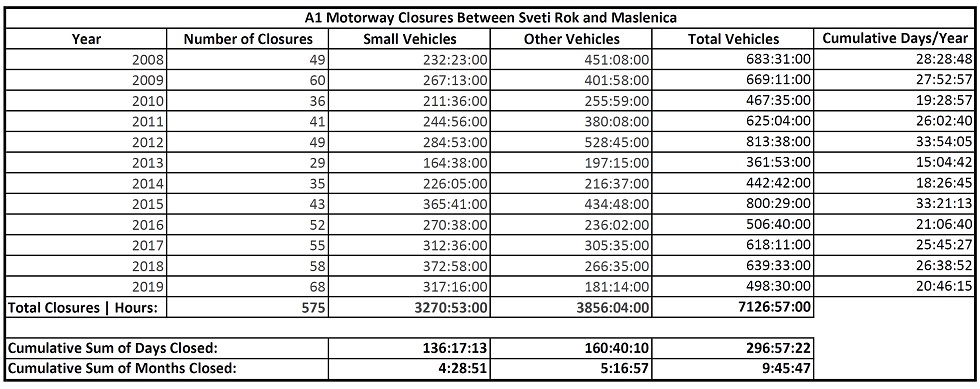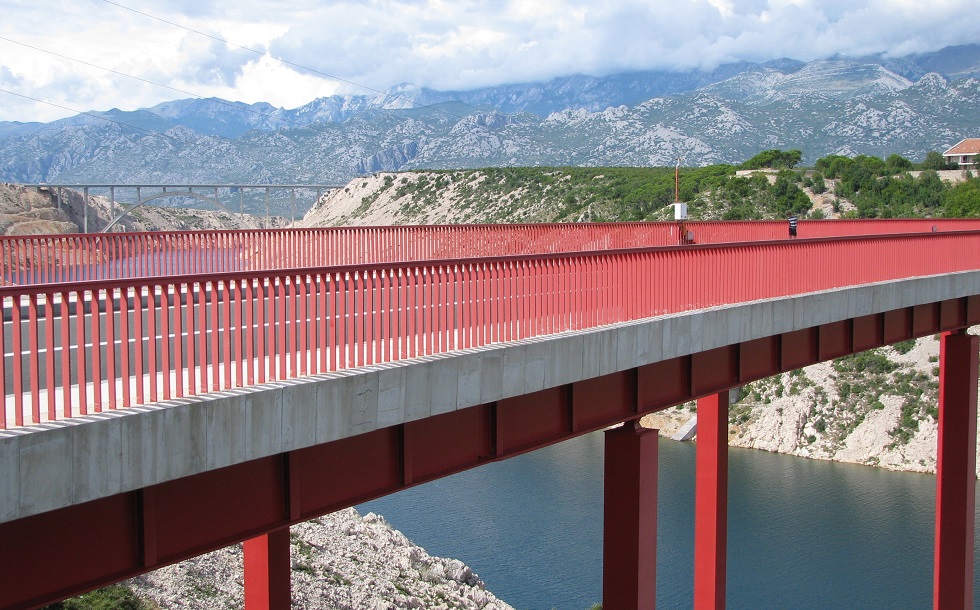President Cancels Attendance at Commemoration of Operation Maslenica
ZAGREB, 22 January, 2021 - President Zoran Milanović on Friday cancelled his attendance at an event commemorating the 28th anniversary of the combined military and police operation "Maslenica 93" in Zadar after he learned that two persons wearing clothes with Ustasha symbols were participating in the event.
Nikola Jelić, spokesman for the Office of the President told Hina that President Milanović arrived in Zadar for the ceremony marking the 28th anniversary of Operation Maslenica 93 and that "after it was noticed that among the participants in the event there were people wearing Ustasha insignia and the Ustasha salute, the President phoned Prime Minister Andrej Plenković and warned him that that was unacceptable."
"Since after that it was established that persons wearing clothes with Ustasha symbols, including the Ustasha salute, would take part in the official part of the event, the President cancelled his attendance," Jelić said.
Acting on orders from President Milanović, who is the Armed Forces' Supreme Commander, the Armed Forces Chief-of-Staff, Admiral Robert Hranj, and all other military commanders left the event after the first part of the ceremony, Jelić added.
Last year Milanović left a ceremony marking the anniversary of the 1995 military and police operation "Flash" in Okučani, the reason again being persons who participated in the official part of the event and who wore T-shirts with the sign "For the homeland ready", the Ustasha salute used in Nazi-allied Independent State of Croatia (NDH).
Maslenica Bridge on A1 Motorway Closed 10 Cumulative Months Since 2008
According to data collected by Croatian Highways (HAC), the Maslenica Bridge on the A1 Motorway has been closed to traffic for 10 cumulative months since 2008. Residents of Dalmatia had believed for decades that their isolation would cease after the highway connecting them to continental Croatia was completed. They also welcomed the arrival of the Karlovac - Zadar - Split section of the A1 motorway route, including the "New" Maslenica Bridge, which officially opened on June 26, 2005.
But that good fortune only lasted until the first big storm, according to Jurica Gašpar/Morski on December 29, 2019. From then on, depending on wind speeds, the section spanning the Sveti Rok Tunnel to the Maslenica Bridge would regularly close to vehicles of all sizes in order to protect passengers.
Maslenica Bridge Closed to Traffic More Frequently
Nothing has changed since then except for the frequency of the motorway closures. For the last seven years this section has been closing even more frequently. So, 2019 will be remembered as the year it closed 68 times, which is the most it has ever been closed for traffic. By the end of this year, this section of the A1 had not seen traffic for more than 498 cumulative hours, or almost 21 days.
Courtesy of Croatian Highways (HAC), there is detailed bridge closure information from January 2008, the creation of the their database, to December 2019. During this time period, a total 575 traffic closures of the Sveti Rok - Maslenica section have been recorded, with a duration of almost 7126 cumulative hours or 297 days, which amounts to almost 10 months of traffic closures on this most delicate part of the A1 motorway.
Bora Closed Maslenica for 34 Cumulative Days in 2012
Regarding closures due to the Bora (extremely strong wind in Adriatic Coast), 2013 was the most peaceful year because the motorway closed only 29 times for almost 362 hours, or 15 cumulative days. And although the previous record for number of traffic closures the (60 in 2009) was not surpassed in 2012; the record was eclipsed for cumulative hours closed. Traffic was banned on this section spanning Sveti Rok Tunnel and Maslenica Bridge for 813 cumulative hours, or more than one month (almost 34 days).
See the table below for more details:

The Maslenica Bridge (called the "New Maslenica Bridge" to distinguish it from the "old" one, which was bombed during the Homeland War and rebuilt in 2004) has been subject to a great deal of public and media scrutiny because of frequent closures due to the storms.
Hurricane Force Winds Hit Bridge at Aggravating Angle
The highest Bora wind speed at Maslenica Bridge was recorded on December 21, 1998. At that time, wind gusts reached hurricane force levels of 248 km/h. Experts say the problem is that the wind does blow crossways, but at a 10-15 degree angle toward the bridge, which is an aggravating factor.

View of 'New' Maslenica Bridge from 'Old' Maslenica Bridge | Wikimedia Commons
Local Shepherds’ Advice Ignored for ‘New’ Bridge
Senior residents in the area recall that the builders of the "Old" Maslenica steel bridge on the D8 state road had inquired with locals about the best location. Shepherds reportedly responded by pointing out places where animals gathered and evacuated during the strongest winds. The first bridge was built on that site, and that turned out to be a successful choice because the Bora has hardly ever closed this bridge. The same cannot be said for the “new” bridge, of course.
Therefore, it’s no surprise that builders hadn’t taken any wind speed measurements for the area of the planned A1 motorway section spanning Sveti Rok – Maslenica before they began construction on the new bridge. Later measurements showed that this area between Marun and Crnava draga is the windiest – and that’s exactly where the highway was built. The average wind speed there is 32 kilometers per hour.

'Old' and 'New' Maslenica Bridges on Map
Most Expensive Motorway Section in Dalmatia
There is enough material to write a book about the politics, historical circumstances and (not) listening to locals and professionals regarding the planning and construction of this section, so those details will be left out of this text. Just the construction of the Sveti Rok Tunnel alone amounted to 1.5 billon HRK (20.1 million EUR), and billions were involved in building the connecting motorway over viaducts, overpasses and ultimately the Maslenica Bridge, which makes this section by far the most expensive motorway in Dalmatia. Therefore, each closure costs millions.
Suffice to say that Maslenica bridge closure has become more frequent issue and an adequate solution has not been found or implemented. But that's why Dalmatia has the most expensive toll road in Europe.
Follow our Travel page for more information, updates and upgrades on infrastructure in Croatia.
Filming of ''Maslenica 93'' Liberation Action Film to Begin This Autumn
When looking at Croatia now, the tourist Mecca busy recording arrivals and overnight stays each year, doggedly determined to beat last year's numbers, the war torn former Yugoslav republic seems like centuries ago. The reality however is that the Homeland War is recent in the minds of many, and as Croatia moves forward, it would do well to remember those who have not yet managed to. At the very least, they should be honoured in all ways possible, a new film on Maslenica 93 will do just that.
As Morski writes on the 22nd of January, 2019, the victorious Croatian army troops who bravely participated in Operation Maslenica will have their first feature film about the first major liberation operation completed by the Croatian armed forces during the Homeland War. The recording of the film, directed by Ivona Juka, should begin this autumn.
Confirmation of the filming of the film about Maslenica was confirmed to Radio Zadar by Anita Juka, who pointed out that no feature film about a military operation that was a significant milestone in the Homeland War has yet been recorded.
''So far, we've talked to more than ninety Croatian defenders, and Danijel Kotlar was the starting point for us and the key to our relationship with other defenders who participated in the action. What attracted us especially to the story of Maselnica is the fact that it was a victorious battle, and in Croatia there have been several quality films about the war, but Croats had always lost in them. It seems to us that time has finally come to film a film that deals with a victorious battle,'' Juka added.
She confirmed that the film director would be her sister Ivona Juka, and that the start of shooting is scheduled for September this year.
Make sure to stay up to date by following our dedicated lifestyle page for much more.
A1 between Posedarje and Maslenica Closed Due to Floods for the First Time in History
The A1 motorway between Posedarje and Maslenica, which is often closed due to heavy wind, was today briefly closed due to severe rainfall and flood - for the first time in history!


